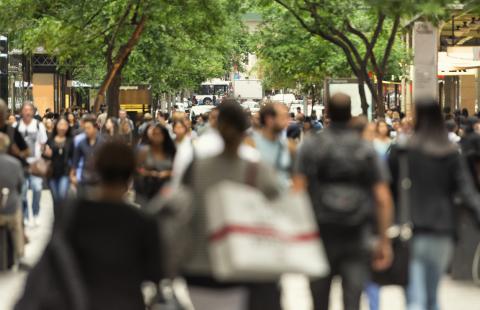Far-red photons (700-750 nm) can accelerate crop growth during indoor production through both physiological and morphological processes. A previous study showed that far-red photons can drive photosynthesis with efficiency similar to that of traditionally defined photosynthetically active photons (400-700 nm) if they are provided together with shorter-wavelength photons. Far-red photons also promote leaf and canopy expansion, which can increase light interception and growth. This study aimed to distinguish the contribution of morphological and physiological changes to crop growth induced by substituting red photons with far-red photons.
Other aspects of far-red photon inclusion and shade response potentially reduce carbon assimilation. Lettuce plants grown under sole-source lighting with additional far-red photons had lower SLW, lower chlorophyll and nitrogen concentrations per unit area, and, consequently, lower leaf light absorptance, which can result in lower carbon assimilation.. Leaves grown under supplemental far-red photons also had a lower quantum yield of CO2 assimilation at photosynthetic photon flux densities higher than 300 μmol⋅m−2⋅s−1. The negative effects of far-red photon supplementation on leaf light absorptance and quantum yield of photosynthesis did not negate the beneficial effect of far-red photons on growth because shoot dry weight increased with supplemental far-red photons.
We studied the long-term effects of substituting red photons with far-red photons on canopy light interception and whole-plant photosynthesis. ‘Little Gem’ lettuce (Lactuca sativa) seedlings were grown under four light spectrums of the same total photon flux density (400-750 nm). In addition to a background of a mixture of white and blue photons of 150 μmol⋅m−2⋅s−1, we provided 51 μmol⋅m−2⋅s−1 red photons, far-red photons, or mixtures of red and far-red photons.
We discovered that far-red photon substitution of red photons induced leaf expansion and hyponasty and increased the projected canopy size. Morphological changes in lettuce plants induced by far-red photons were visible early in the experiment. The increase in plant height is likely a result of both an increase in leaf length and a change in leaf angle. Far-red photons stimulate upward growth of leaves to form a steeper leaf angle, known as hyponasty. Our observations of taller plants and longer leaves align with the typical symptoms of a shade avoidance response
In conclusion, during our study, far-red photon substitution induced leaf expansion and canopy enlargement, which increased canopy light interception. Far-red photon substitution also reduced the amount of ePAR photons leaves absorbed, simply because we replaced strongly absorbed red photons with less absorbed far-red photons. This reduction in absorbed ePAR photons by leaves decreased the light energy available for photosynthesis and, thus, negatively impacted photosynthetic rates.
Our results suggest a potential cost-saving opportunity for growers because far-red LEDs have higher efficacy (μmol photon output per joule of energy consumed) than blue, red, and white LEDs. Thus, partially replacing LEDs that provide PAR with far-red LEDs can reduce power consumption without a negative impact on crop growth.
Jun Liu is a Post-doctoral Researcher at Texas A&M University AgriLife Research Center, Dallas, Texas
The full article can be found on the Journal of the American Society for Horticultural Science electronic journal website at: https://doi.org/10.21273/JASHS05306-23
Established in 1903, the American Society for Horticultural Science is recognized around the world as one of the most respected and influential professional societies for horticultural scientists. ASHS is committed to promoting and encouraging national and international interest in scientific research and education in all branches of horticulture.
Comprised of thousands of members worldwide, ASHS represents a broad cross-section of the horticultural community-scientists, educators, students, landscape and turf managers, government, extension agents and industry professionals. ASHS members focus on practices and problems in horticulture: breeding, propagation, production and management, harvesting, handling and storage, processing, marketing and use of horticultural plants and products. To learn more, visit ashs.org.








